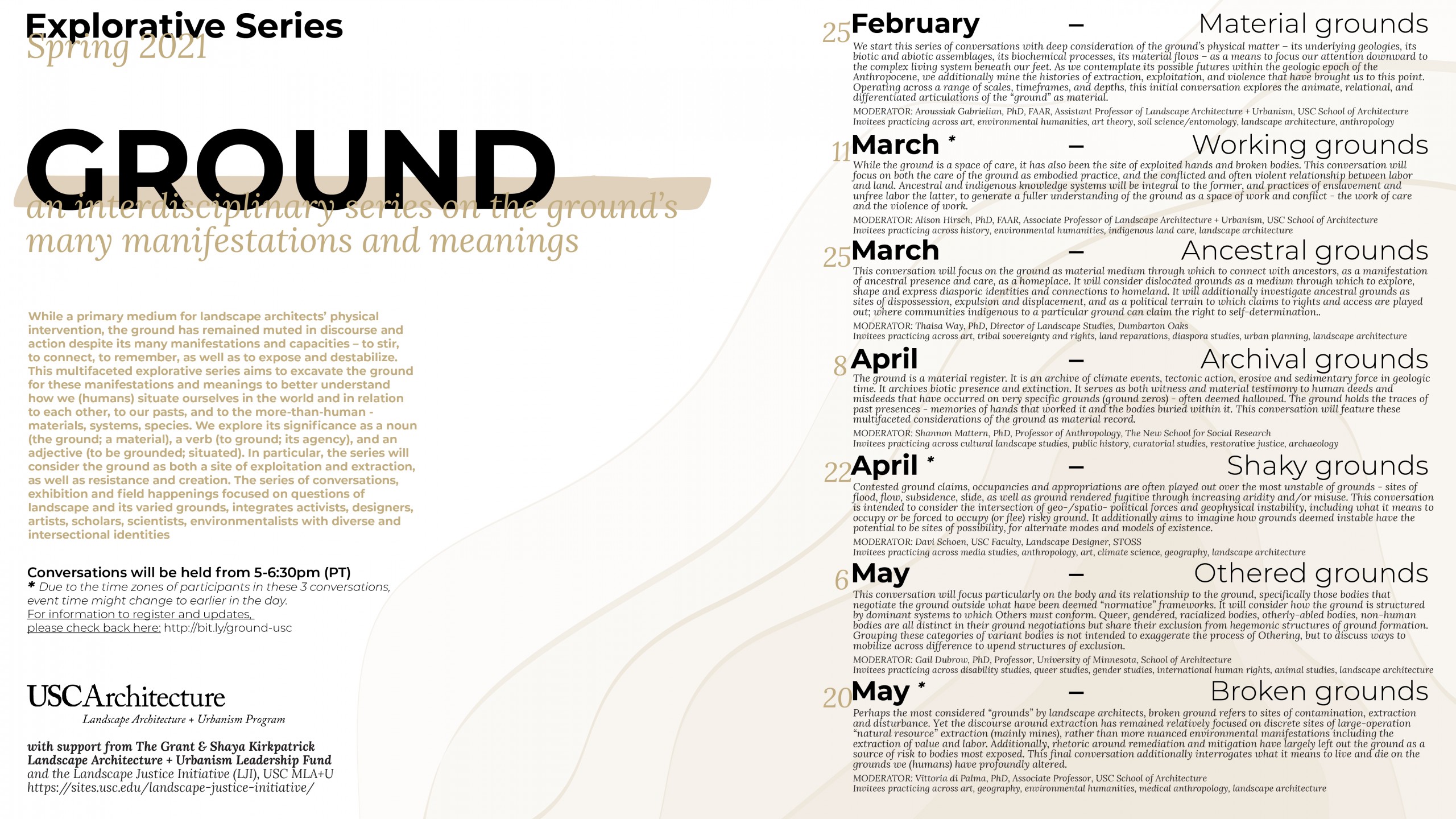an interdisciplinary series on the ground’s many manifestations and meanings
While a primary medium for landscape architects’ physical intervention, the ground has remained muted in discourse and action despite its many manifestations and capacities – to stir, to connect, to remember, as well as to expose and destabilize. This multifaceted explorative series aims to excavate the ground for these manifestations and meanings to better understand how we (humans) situate ourselves in the world and in relation to each other, to our pasts, and to the more-than-human – materials, systems, species. We explore its significance as a noun (the ground; a material), a verb (to ground; its agency), and an adjective (to be grounded; situated). In particular, the series will consider the ground as both a site of exploitation and extraction, as well as resistance and creation. The series of conversations, exhibition and field happenings focused on questions of landscape and its varied grounds, integrates activists, designers, artists, scholars, scientists, environmentalists with diverse and intersectional identities.
Part II – Working grounds
While the ground is a space of care, it has also been the site of exploited hands and broken bodies. This conversation will focus on both the care of the ground as embodied practice, and the conflicted and often violent relationship between labor and land. Ancestral and indigenous knowledge systems will be integral to the former, and practices of enslavement and unfree labor the latter, to generate a fuller understanding of the ground as a space of work and conflict – the work of care and the violence of work.
MODERATOR: Alison Hirsch, PhD, FAAR, Associate Professor/Director of Landscape Architecture + Urbanism, USC School of Architecture
Invitees practicing across history, environmental humanities, indigenous land care, landscape architecture
Register Here


